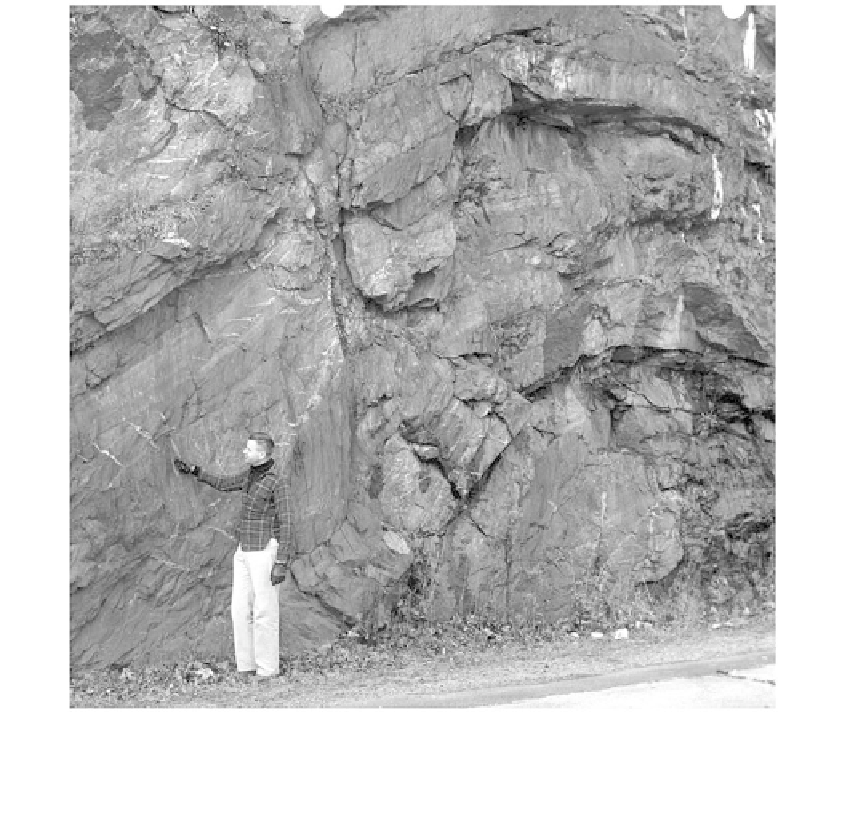Environmental Engineering Reference
In-Depth Information
FIGURE 6.32
Crest of anticline in High Falls shale (Delaware River, Pennsylvania, 1952). Tension cracks are calcite-filled.
Parallel Ridges
Horizontal beds folded into anticlines and synclines produce parallel ridges
(Figure 6.36),
typical of the Appalachian Mountains and moist climates. Starting from a peneplain, the
soluble limestones weather the quickest and form the valleys. Shales form the side slopes
and the more resistant sandstones form the crests and ridges.
Horizontal beds folded into a monocline produce parallel ridges (hogbacks) and mesas
in an arid climate where weathering is primarily mechanical, as shown in
Figure 6.37.
Ridges in Concentric Rings
Beds deformed into a dome will erode to form ridges in concentric rings, with the shal-
lower side slopes dipping away from the center of the former dome (see
Figure 6.1)
.
Beds deformed into a basin will erode to form ridges in concentric rings with the shal-
low side slopes dipping into the center of the former basin.
Plunging Folds
The landform of plunging folds is illustrated in the SLAR image
(Figure 6.38)
in which a
section showing the folded beds are included.


